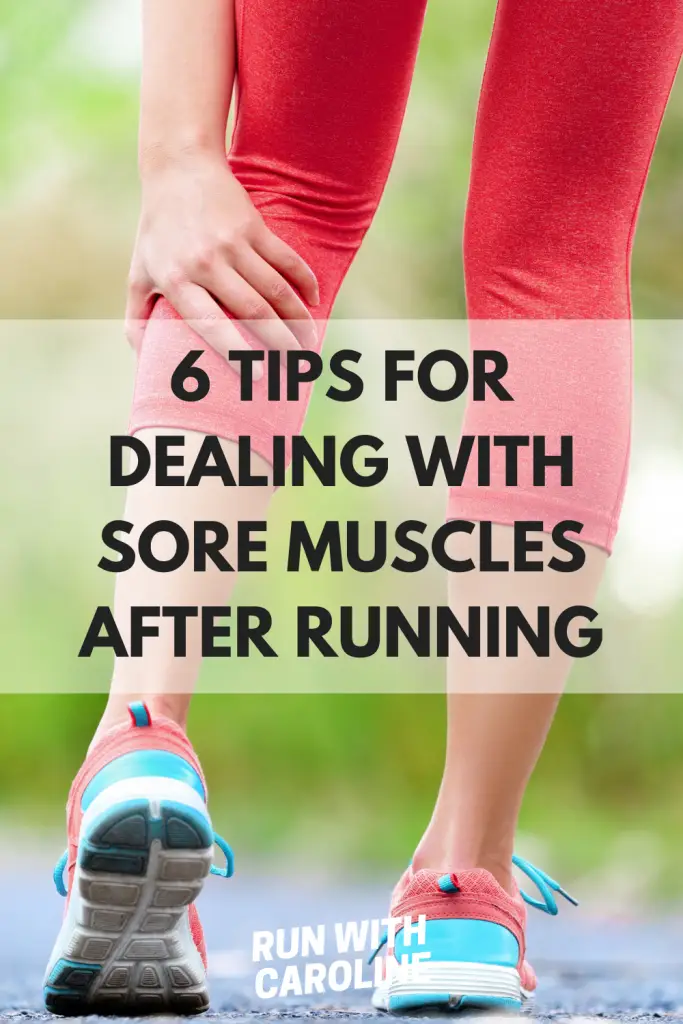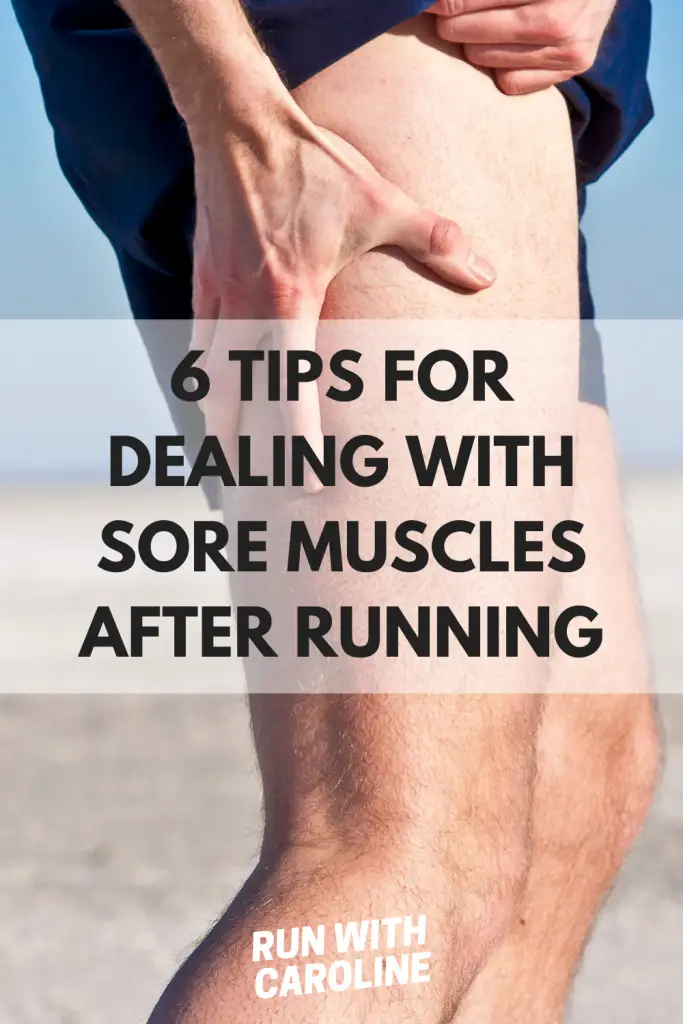It’s very common to have sore and stiff legs after running, especially if you’re a beginner runner and you’re just starting out on your running journey.
Sore muscles after running is normally something you experience 24 to 48 hours after your run.
You may also feel soreness and stiffness following other forms of exercise, such as weight training or cycling.
Depending on the duration and intensity of the session, the soreness may result in some discomfort.
Muscle soreness in the days after exercise is also known as delayed onset muscle soreness (DOMS).
This is where muscle pain begins after you’ve worked out or been for a run. It normally starts one or two days after exercise – you won’t feel DOMS during the workout or run itself.
Studies have shown that DOMS could be due to a number of factors, namely the build of lactic acid in your muscles, connective tissue damage and muscle damage and inflammation.
Sore muscles after running is something that all runners come across in their running journey.
The key is to know how to treat sore and stiff muscles and ensure you are fighting fit for your next run.

6 tips for dealing with sore muscles after running
Cool down after your run
If you regularly experience sore muscles after running, a cool down is essential to soothe tight or sore muscles.
It is also designed to gradually lower your heart rate after a run, returning it back to its pre-run state.
As part of your cool down, include some light jogging along with some static stretches that target the major muscle groups in your legs, core and arms, such as your glutes, hamstrings and calf muscles.
Set aside 10 minutes after your run to do a cool down and stretch. Target any areas of the body that feel particularly tight. Gentle stretching will help the body to recover faster.
Related: The best cool down stretches to do after a run
Refuel and replenish
After running, especially a long run, your energy stores are depleted and need replenishing. Your body’s main source of energy is the glycogen stored in your muscles.
The carbohydrates you eat before a run – such as a big plate of pasta – are converted into glucose which forms glycogen.
Protein is an essential nutrient when it comes to muscle repair and recovery.
Aim to consume food that is 1 gram of protein to 3 grams of carbohydrates (3:1 ratio) within 30 minutes after your run.
Example foods to eat after your run are: nutrition bars, toast with peanut butter, protein shakes and smoothies, bananas and Greek yoghurt.
Chocolate milk is also a great post-run drink.
Related: The best protein foods for runners

Stay hydrated
We all know how important it is to stay hydrated, but it becomes even more key if you are exercising regularly.
When you run, you lose fluid by sweating and breathing.
You also continue to lose fluids after your run as it keeps sweating to keep cool, so it’s important to rehydrate after a run, especially if it lasts for 60 minutes or more.
Aim to replace about 80 per cent of the fluids you lost during your run. A simple way to work this out is to drink at least 500ml (half a litre) of water.
If you’ve completed a long run that lasted an hour or more, aim to drink at least one litre of water.
The key is to keep drinking regularly in the hours after your run to avoid dehydration and the unpleasant side effects that this brings.
Rapid heart rate, headaches, dizziness and foul smelling urine are all signs of dehydration. A side stitch while running can also be a sign that you are not drinking enough water.
Related: 4 key hydration tips for runners
Rest and recover
If you’ve finished a long or hard run, the tendency for some runners is to go running again the following day.
Whilst this isn’t wrong, it doesn’t allow your body to sufficiently rest and recover.
Schedule in rest days after your long runs and make the most of your non-running days. Your muscles will thank you for it!
Whilst rest and recovery is important, don’t avoid any form of activity if you’re feeling sore.
Active recovery is recommended so that you’re not sitting for long periods of time.
Try going for a brisk walk or a gentle bike ride. Any form of movement that gets your blood flowing to your muscles is recommended.

Try foam rolling
Foam rolling is a great way to relieve muscle stiffness and soreness.
Foam rolling works by releasing tension and increasing blood flow in your muscles.
The simplest way to use a foam roller is to use your bodyweight to apply moderate pressure to a spot of your body that is sore or tight.
Move slowly forwards and backwards on the roller, trying not to place too much pressure.
Foam rollers when accompanied by a regular stretching routine are a great way to increase flexibility and the range of motion in your muscles.
Related: Benefits of foam rolling: How to foam roll properly as a runner
Don’t ignore sudden or sharp pain
If you ever feel pain during or immediately after a run or workout, this is not considered DOMs and should be treated differently.
Intense muscle pain during or after a run could be a sign of a muscle tear or strain.
If you experience this type of pain, it is advisable to stop your run immediately so not to make the pain worse.
Related: 5 important things to do once you have a running injury
- 5 things I wish I’d known before returning to running - March 3, 2024
- Running 20 minutes a day: Benefits + how to start - January 27, 2024
- How to run your first 2 hour half marathon - January 16, 2024

AMY
Sunday 30th of May 2021
In the article I found a lot of interesting tips for myself and how to improve my training and protect myself from injuries.